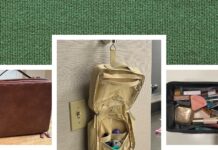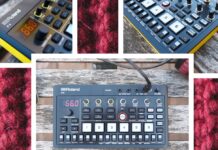The catch was math. Here’s a one-paragraph explanation: Many grinders made for brewing espresso have hundreds of grind-size options, where something like the Uniform or a Baratza Encore has a more modest 40. A classic espresso-making recipe is a one-to-two ratio, so if you grind 18 grams of beans, you should be able to pull a 36-gram shot in about 25 to 30 seconds. Lacking that fine adjustment, this wasn’t always possible with the Uniform. But by adjusting the amount of beans you start with and keeping the ratio, say 15 grams of beans and stopping the shot at 30 grams, I could get it to work in the right amount of time. It was a bit of a pain but kinda fun to figure out.
From there, I went to the Seattle lab of WIRED friends Sam Schroeder, co-owner of Olympia Coffee Roasting Company, and Reyna Callejo, Olympia’s director of training and innovation. I had hopes that this was a machine that could do it all, and boy were those hopes dashed fast.
Espresso testing was over almost as soon as it started. I kept mum on my findings, wanting to see what they came up with, and they ran into the same problem I did. Using their Big Truck Organic blend, grind size five was far too fine, and the coarser seven poured way too fast.
“Two steps make a 25-second difference,” Reyna noted, perhaps sensing trouble. “That’s a lot!”
Step six was the only option from there, and the shot Reyna pulled poured too fast, meaning it was under-extracted, at which point Espresso testing was complete.
“We give people a weight of beans and say ‘adjust your grind,’” explained Sam. “You can’t do that with this machine.”
“But wait,” I blubbered. “You can change the weight of the beans and adjust the shot size.”
“That’s a lot of math for your morning,” countered Sam, and the more I thought about it the more I agreed. We want to choose the size of the coffee we make at home, not one dictated by our grinder.
Things got better from there. Even as things went sideways with espresso, they noted that it was a normal-retention grinder, meaning if you grind 18 grams of beans, you get close to 18 grams of grounds out of it. Sometimes, particularly with flat-burr grinders where gravity isn’t helping, grounds get lost inside the machine or in the grounds bin, which means you’re losing money every time you grind. There’s even a grinder called the Niche Zero designed to leave (or retain) no grounds in the machine.
Yet for as much fussing as we would have had to do to make espresso, pour-over, which Reyna refers to as “the second hardest kind of coffee to make” was one and done. Wilfa recommends grinding it between steps 14 and 28. Sam ground on step 24 to use with a Kalita Wave dripper, and the coffee came out perfect, measuring 20.36 percent extraction (they like between 18 to 22 percent), and with total dissolved solids (TDS) of 1.40 percent. For French press peeps like yours truly, the grind was plenty coarse, and when I made some at home it was deeply flavored and not too sludgy. Easy peasy.








